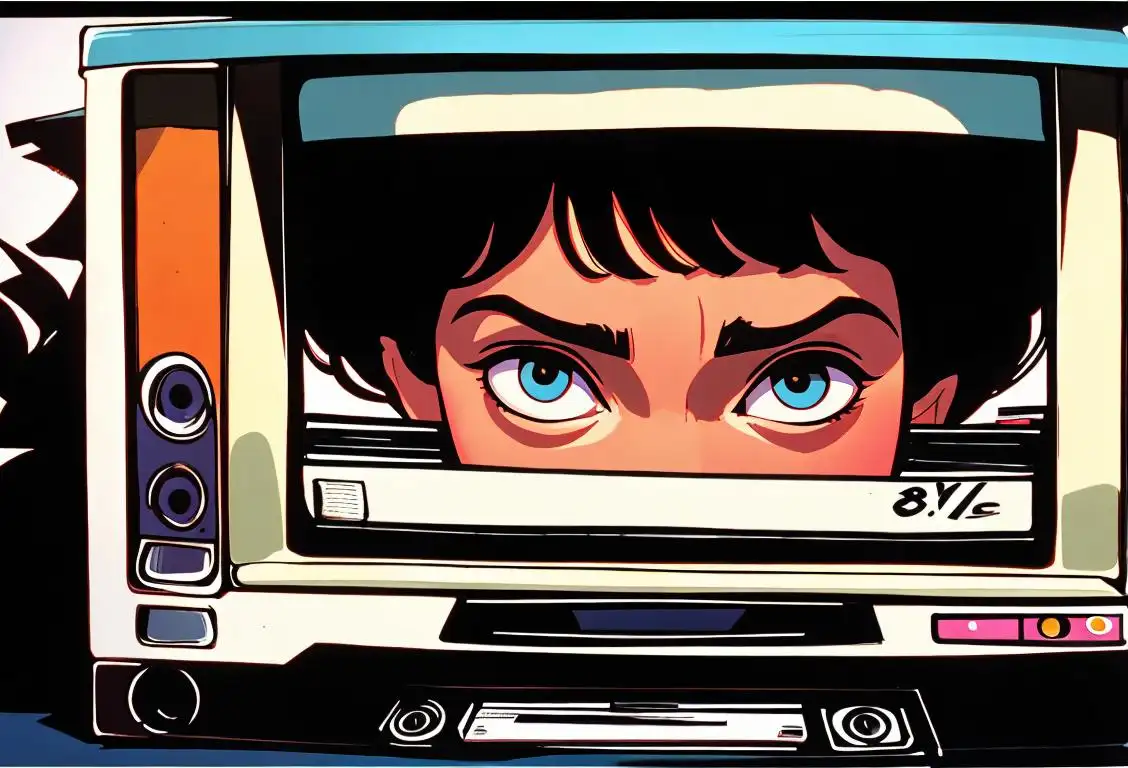National Videos Game Day

Welcome to the exciting world of National Video Game Day! Get ready to embark on a pixelated adventure filled with fun and nostalgia. Whether you're a seasoned gamer or just a casual player, this special day celebrates the joy and excitement that video games bring to our lives. So, grab your controller and let's press start on this epic quest!
When is Videos Game Day?
It's national videos game day on the 12th September.
A Brief History of National Video Game Day
Imagine a time when video games were a novelty, when arcades were filled with flashing lights and the sound of quarters being dropped into machines. Well, National Video Game Day takes us back to those golden days of gaming. It's a day to honor the pioneers who turned pixels into entertainment and created worlds for us to explore.
The origins of this national day are a bit mysterious, much like the hidden levels in our favorite games. But we do know that it gained popularity thanks to the internet and the passionate gaming community. People began to share their love for video games on social media, and soon enough, National Video Game Day was born. Now, it's a day where gamers of all ages come together to revel in the magic of video games.
How to Celebrate
Celebrating National Video Game Day is as easy as a button press. Here are a few ideas to get you started on your gaming adventure:
- Create a gaming marathon: Gather your friends or loved ones and plan a day filled with non-stop gaming. From classic console games to the latest multiplayer titles, the choice is yours. Just make sure to keep the snacks on standby and prepare for some friendly competition.
- Explore the history of video games: Take a trip down memory lane and revisit the iconic games that defined your childhood. From Mario to Sonic, there's no shortage of legendary characters and worlds to discover. And don't forget to share your gaming memories with the world using the hashtag #NationalVideoGameDay.
- Support local game developers: Show some love to the talented individuals who create the games we love. Check out independent game studios in your area or try out some lesser-known titles. You might just stumble upon your new favorite game.
Did You Know?
In 1983, the video game industry experienced a major upheaval known as the Video Game Crash. Oversaturation of low-quality games, coupled with high prices, led to a decline in sales and the near collapse of the industry. Thankfully, this dark period was followed by the resurgence of gaming in the late 1980s, and here we are today, celebrating National Video Game Day!
History behind the term 'Videos Game'
1958
The Birth of Video Games
In 1958, the term 'video game' was coined as a label for interactive computer games. It was first used by Willy Higinbotham, an American physicist, who designed an interactive tennis game on an oscilloscope. This game, called 'Tennis for Two,' was an early example of a video game, featuring two players who could control the virtual paddles on the screen to play a game of tennis.
1940
The Birth of Electronic Games
In 1940, Edward Condon developed the first known computer game, which was a tic-tac-toe game that ran on the limited memory of vacuum tube-based electronic computers. This was a significant milestone in the emergence of electronic games.
1940
The Birth of Computer Games
In the year 1940, the first steps towards what would eventually become video games were taken. English mathematician and inventor, Alan Turing, created a theoretical device called the 'universal machine' which laid the groundwork for modern computers. It was during this time that the concept of interactive electronic entertainment began to form.
1950
The Rise of Early Electronic Games
The origins of video games can be traced back to the early 1950s when scientists and engineers began exploring the potential of electronic entertainment. In 1950, a British psychologist named Dr. Frederic Bartlett created a game called Nimatron, which was one of the first electronic game machines. This game paved the way for future innovations in electronic gaming.
1958
Birth of the First Video Game
In 1958, physicist William Higinbotham created the world's first video game called 'Tennis for Two.' This game was developed to entertain visitors at Brookhaven National Laboratory's annual public exhibition. Tennis for Two was played on an analog computer and used an oscilloscope screen to display the game's graphics. It simulated a game of tennis and laid the foundation for future video games.
1958
The Advent of 'Video Games'
The term 'video game' itself was coined in the year 1958 by physicist William Higinbotham. He created a simple tennis game on an oscilloscope for the Brookhaven National Laboratory's annual public exhibition. This game, known as 'Tennis for Two,' allowed two players to engage in competitive sports virtually. While Higinbotham referred to it as a 'video game' in a press release, the term didn't gain widespread recognition until later.
1972
The Commercial Breakthrough
The year 1972 marked a major milestone in the history of video games. Nolan Bushnell and Ted Dabney founded Atari, a company that revolutionized the gaming industry by introducing Pong, a simple two-player table tennis game. Pong was an instant hit and became the first commercially successful video game, paving the way for the future growth of the industry.
1958
The Cathode-Ray Tube Amusement Device
In 1958, William Higinbotham created the 'Tennis for Two' game, which was played on an oscilloscope. This game is often considered to be one of the earliest video games, as it used a cathode-ray tube display to represent the game's graphics.
1961
Spacewar!: The Birth of Interactive Gaming
In 1961, a group of students from the Massachusetts Institute of Technology (MIT) developed the groundbreaking game called Spacewar! It was the first interactive video game that allowed two players to engage in a virtual space battle. Spacewar! laid the foundation for the concept of multiplayer gaming and showcased the potential of video games as an interactive medium.
1972
The Rise of Arcade Games
In 1972, a game called 'Pong' was released by Atari. Pong was the first commercially successful video game and is often credited as the catalyst for the video game industry. It was a simple table tennis simulation, which became incredibly popular in arcades across the United States. Pong's success opened the doors for countless other video game developments and ignited the public's fascination with interactive electronic entertainment.
1980
Home Video Game Consoles
The year 1980 marked the introduction of the first home video game consoles, notably the Atari 2600. With the Atari 2600, players could enjoy video games in the comfort of their living rooms. This shift from arcades to home consoles revolutionized the gaming industry, making video games more accessible and appealing to a broader audience. The release of home consoles sparked a wave of creativity, leading to innovative and memorable video games.
1972
Pong: The Breakthrough
The year 1972 witnessed the release of 'Pong,' a table tennis-themed arcade game developed by Atari. 'Pong' captured the imagination of players worldwide and became the first successful commercial video game. Not only did 'Pong' popularize the concept of video games, but it also established the foundations of the video game industry.
1972
The Birth of the Home Console
The year 1972 marked a significant milestone in the history of video games with the introduction of the Magnavox Odyssey, the first home video game console. Created by Ralph Baer, the Odyssey allowed players to enjoy simple games like Pong in the comfort of their own homes. This groundbreaking device set the stage for the future home gaming revolution and ignited the imaginations of millions.
1978
The Home Consoles Revolution
In 1978, the term 'video game' gained even more prominence with the release of the first home video game console, the Atari 2600. This console allowed people to play video games in the comfort of their own homes, bringing gaming to a wider audience. The Atari 2600 was a game-changer and set the stage for the rise of home consoles as a popular form of entertainment.
1971
First Commercial Arcade Game
The year 1971 marked the release of 'Computer Space,' the first commercially sold video game. Developed by Nolan Bushnell and Ted Dabney, this game featured a combination of space combat and arcade gameplay, laying the foundation for the booming arcade industry.
1985
The Advent of the Nintendo Entertainment System
In 1985, Nintendo released the Nintendo Entertainment System (NES) in North America, revolutionizing the video game industry. The NES introduced iconic games such as Super Mario Bros. and The Legend of Zelda, captivating a wide audience and propelling video games into mainstream popularity. The NES became the best-selling console of its time, cementing Nintendo's position as a major player in the gaming market.
1972
The Birth of Home Video Games
In 1972, Magnavox introduced the 'Magnavox Odyssey,' the first home video game console. Although the console had simple graphics, it allowed players to connect it to their TV screens, bringing the gaming experience into people's homes for the first time.
1983
The Video Game Crash
The year 1983 witnessed a major setback for the video game industry, often referred to as the 'video game crash.' Due to an oversaturation of low-quality games and a lack of consumer interest, many video game companies went bankrupt, causing a decline in the popularity of video games. This event led to the restructuring of the industry and a renewed focus on developing high-quality games.
1983
The Video Game Crash
In 1983, the video game industry experienced a major setback known as the 'Video Game Crash.' Due to oversaturation of the market, poor quality games, and a lack of consumer interest, the industry faced a severe decline. This crash led to the bankruptcy of several prominent video game companies and a general skepticism towards video games. However, this downturn allowed for a necessary reevaluation of game development practices and paved the way for future successes.
1978
The Golden Age of Arcade Games
The late 1970s marked the golden age of arcade games, where video games started gaining immense popularity. Classics such as 'Space Invaders' (1978) and 'Pac-Man' (1980) became cultural phenomena, captivating large audiences and contributing to the rise of arcades as social spaces. This era solidified the term 'video game' in mainstream culture and set the stage for further advancements.
1977
Rise of Console Giants
The year 1977 witnessed the release of two groundbreaking video game consoles: the Atari 2600 and the Commodore PET. The Atari 2600, with its diverse game library, became a huge success and solidified Atari's position as a leading console manufacturer.
1985
Revival through Iconic Games
In 1985, Nintendo released the Nintendo Entertainment System (NES) console, which marked the revitalization of the video game industry. The NES came bundled with the legendary game 'Super Mario Bros,' which became an instant hit. Super Mario Bros became a cultural phenomenon and symbolized the resurgence of video games. It set the stage for a new era of video game consoles and iconic characters that captured the imaginations of millions worldwide.
1993
The Rise of 3D Gaming with Doom
1993 saw the release of Doom, a game that revolutionized the industry by popularizing the first-person shooter genre and utilizing advanced 3D graphics. Developed by id Software, Doom became a cultural phenomenon and a benchmark for immersive gaming experiences. Its success paved the way for other renowned franchises, leading to the modern era of realistic and visually stunning video games.
1989
The Rise of Handheld Gaming
The term 'video game' continued to evolve and expand with the introduction of handheld gaming devices. In 1989, Nintendo released the Game Boy, a portable gaming console that allowed players to enjoy video games on the go. The Game Boy became a huge success, selling millions of units worldwide and solidifying the concept of handheld gaming as a significant part of the video game industry.
1985
The Advent of Home Consoles
With the release of the Nintendo Entertainment System (NES) in 1985, video games entered the realm of home entertainment. The NES, along with consoles like the Sega Genesis and later the PlayStation, Xbox, and Nintendo Switch, brought video games into people's living rooms, making them widely accessible. The term 'video game' became synonymous with console gaming, revolutionizing how individuals experienced interactive entertainment.
1993
The Birth of 3D Gaming
1993 marked a significant breakthrough in video game technology with the release of the game 'Doom' by id Software. 'Doom' was one of the first games to feature immersive 3D graphics and multiplayer capabilities, revolutionizing the gaming experience. This influential title paved the way for the future of 3D gaming and set a new standard for graphical realism in video games.
2007
The Emergence of Mobile Gaming
In 2007, Apple introduced the iPhone, a game-changing device that not only revolutionized smartphones but also transformed the gaming landscape. With the App Store, it became possible for developers to create and distribute games directly to consumers. This led to the explosion of mobile gaming, making video games more accessible and inclusive than ever before.
1993
The Rise of PC Gaming
By the early 1990s, personal computers became increasingly powerful, enabling a new wave of video game experiences. Games like 'Doom' (1993) and 'Myst' (1993) showcased the graphics and immersive qualities of PC gaming. The term 'video game' expanded to encompass the broad range of games played on personal computers, further solidifying its presence in the gaming lexicon.
1993
The Introduction of 3D Gaming
1993 saw the emergence of 3D gaming with the release of the Sega Genesis' successor, the Sega Saturn, and Sony's PlayStation. Both consoles offered immersive 3D graphics, significantly enhancing the gaming experience. Games like 'Sega Rally Championship' and 'Tekken' showcased the potential of this new dimension, captivating players with visually stunning worlds. The introduction of 3D gaming revolutionized the way games were perceived and opened up a new realm of possibilities.
1985
Nintendo Entertainment System Revolution
In 1985, Nintendo launched the Nintendo Entertainment System (NES) in North America, which marked a turning point for the industry. The NES introduced iconic games like Super Mario Bros. and The Legend of Zelda, popularizing gaming and laying the groundwork for future console generations.
2006
Next-Generation Consoles
The year 2006 marked a significant milestone with the launch of the PlayStation 3, Xbox 360, and Wii consoles. Each console represented major advancements in technology and introduced unique features such as motion controls and online gaming capabilities. The release of these next-generation consoles propelled the video game industry to new heights, attracting a wider audience and setting the stage for the modern era of gaming.
1993
The Birth of Multiplayer Online Games
Richard Garriott's Ultima Online, released in 1993, is widely regarded as the first commercially successful Massively Multiplayer Online Role-Playing Game (MMORPG). This marked the beginning of a new era, where players could connect and interact with each other in virtual worlds.
2020
The Global Impact and Cultural Relevance
Video games have come a long way since their humble beginnings. Today, they have become a multi-billion dollar industry, rivaling the film and music industries. Games like Minecraft, Fortnite, and League of Legends have not only captured the hearts of millions but have also shaped modern pop culture. Video games have transcended borders and demographics, connecting people from all walks of life and fostering communities around the world.
2007
Mobile Gaming Revolution
In 2007, Apple revolutionized the gaming industry with the introduction of the iPhone and its App Store. This innovation propelled the popularity of mobile gaming, enabling millions of people to enjoy video games on their smartphones and tablets. The term 'video game' now encompassed the ever-expanding realm of mobile gaming, demonstrating the continuous evolution and cultural impact of this form of entertainment.
2006
The Emergence of Mobile Gaming
The term 'video game' took on a new dimension in 2006 with the advent of mobile gaming. The launch of the iPhone by Apple introduced a platform that allowed users to play video games directly on their smartphones. This development led to the exponential growth of mobile gaming, making video games more accessible and portable than ever before.
2011
Rise of Mobile Gaming
In 2011, the mobile gaming industry experienced a rapid rise following the introduction of smartphones and app stores. Games like 'Angry Birds' and 'Flappy Bird' captivated mobile users worldwide and showcased the potential of gaming on the go. Mobile gaming became increasingly accessible, allowing people to enjoy games anytime and anywhere. This shift expanded the gaming audience even further, making video games an integral part of mainstream culture.
1993
The Rise of First-Person Shooters
The release of id Software's Doom in 1993 revolutionized the gaming industry by popularizing the first-person shooter genre. Its multiplayer mode became immensely popular and paved the way for subsequent influential titles like Quake and Half-Life.
2007
Smartphone Gaming Takes Off
The introduction of the iPhone in 2007 revolutionized the concept of mobile gaming. With its powerful hardware and intuitive touch screen, smartphones became a popular platform for gaming, leading to the creation of highly successful titles like Angry Birds and Temple Run.
2020
Unprecedented Growth and Diversity
In recent years, the video game industry has witnessed unprecedented growth and diversification. The advent of virtual reality (VR) gaming, augmented reality (AR) experiences, and the rise of esports have pushed the boundaries of interactive entertainment. Games like 'Fortnite,' 'Minecraft,' and 'The Legend of Zelda: Breath of the Wild' have achieved immense popularity and cultural impact. The video game industry continues to evolve, captivating players of all ages and backgrounds around the globe.
2020
Virtual Reality's Resurgence
Virtual Reality (VR) gaming experienced a resurgence in 2020 with the release of advanced VR headsets, such as the Oculus Quest 2. These headsets offer immersive and realistic gaming experiences, making VR a promising future for the video game industry.
Did you know?
Did you know that the first video game ever made was called 'Pong' and was released in 1972? It was a simple game of virtual ping pong that paved the way for the future of gaming.Tagged
fun nostalgia games entertainmentFirst identified
12th September 2019Most mentioned on
12th September 2019Total mentions
88Other days
Videos Game Day
Vidya Game Day
Video Games Day
Vcr Day
Solitaire Day
Circuit Vetoes Are Back Gb In Game Rules On Day
Tv Day
Tv Station Rounded Up News Session For The Day
Dice Day
Anthem Before Every Movie Every Day








